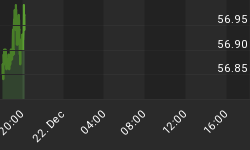When was the last time you actually bent down and picked up that penny you dropped? The U.S. penny is on its way to extinction so it's time to bid farewell to the basic coin and share with you an inflationary "penny for your thoughts".
The penny's composition has changed over the 219 years it has been in circulation:
From 1787 to 1837 the composition of the penny was pure copper; From 1837 to 1857, the penny was made of bronze (95 percent copper and 5 percent tin and zinc); From 1857, the penny was 88 percent copper and 12 percent nickel; The Cent became bronze again (95 percent copper and 5 percent tin and zinc) in 1864 and stayed that way until 1962; In 1962, the cent's zinc content was removed. Then, in 1982, the composition of the penny was changed to 97.5 percent zinc and only 2.5 percent copper. (This information was taken from the United States Mint website)
You may be wondering why the United States had to switch from a penny that consisted of mostly copper, to one that is almost all zinc. Well, before 1982 the old copper coin weighed 3.1 grams. 100 coins - or $1.00 worth - weighed 310 grams. Since a pound is about 453 grams, 100 pennies at 310/453 = .68 pound. Today, at $3.45 a pound for copper, 100 of those 1982 mostly copper pennies are worth about $2.35.
The U.S. government, which is in the business of "making money", has done a fabulous job of profiting on this coin. Since 1982, they've used an inexpensive copper (zinc) as something of greater value (copper) in the minting of the penny. With inflation today, even the zinc in the penny is now worth more than the penny itself. It actually pays to take your paper money to the bank and exchange it for pennies, then sell them for scrap. I guess the time has really come to stop making these coins.
But the real story behind the now-worthless penny is, by far, the surge in inflation. If the core inflation rate is, indeed, only 2.6 percent, and the year-over-year increase in the CPI is 4.3 percent, I wish someone would explain why my household expenses have gone up so much (see chart below):

This chart doesn't even include the following: the cost of groceries or prescription drugs; take-out food can cost as much as eating out; parking garages in a city like New York are charging $10 more a day to park, reaching $40 a day in some garages; newspapers are shrinking to stay in business because the cost of paper is so high, they need to use less of it. (Circulation is also down as many former subscribers now read the news directly from their computers).
Worse yet, global warming has lead to record heat in the Midwest and pushed up the cost of wheat to a ten-year high. Fruit is also shriveling and nuts are getting burned in their shells. It's so hot, farm workers can sometimes work only half a day. This hasn't helped the cost of food one bit so I'm stocking up before the middle class figures this out and there's a mad rush at Costco to buy groceries cheap, especially cereal.
When the penny is retired and prices for goods and services are subsequently "rounded up"- an item that would ordinarily cost $1.97, may cost $2.00 - expect a little extra pop in inflation. (The Europeans saw a lot of this rounding up when they turned in their local currencies for the euro.)
For as long as I can remember, inflation has been with me, even as a kid when I bought penny candies. In the 1950's, my father actually purchased a brand new modest two-bedroom house in the Midwest for $11,700 and a new car for $2,500. (Some suites at fancy hotels in Las Vegas can charge $2,500 for one night). Inflation also makes planning and saving for retirement a real issue. Unless you know how long you will live, I have to assume that the core cost of goods I need will be going up at least 10 to 15 percent in nominal dollars a year.
So, for the time being, our best recommendation for a long-term inflation hedge is to own real gold and silver and some I-Bonds in a rainy day fund. (Thank you, Federal Reserve, for a "fiat monetary system".)
In years past, Americans would hoard dimes, quarters and silver dollars (before the silver was taken out of them). A silver dollar weighing one ounce would today be worth $11! Therefore, in the long run, stashing away zinc pennies may actually make a lot of cents. Any enterprising boy scout should be able to figure this out.















